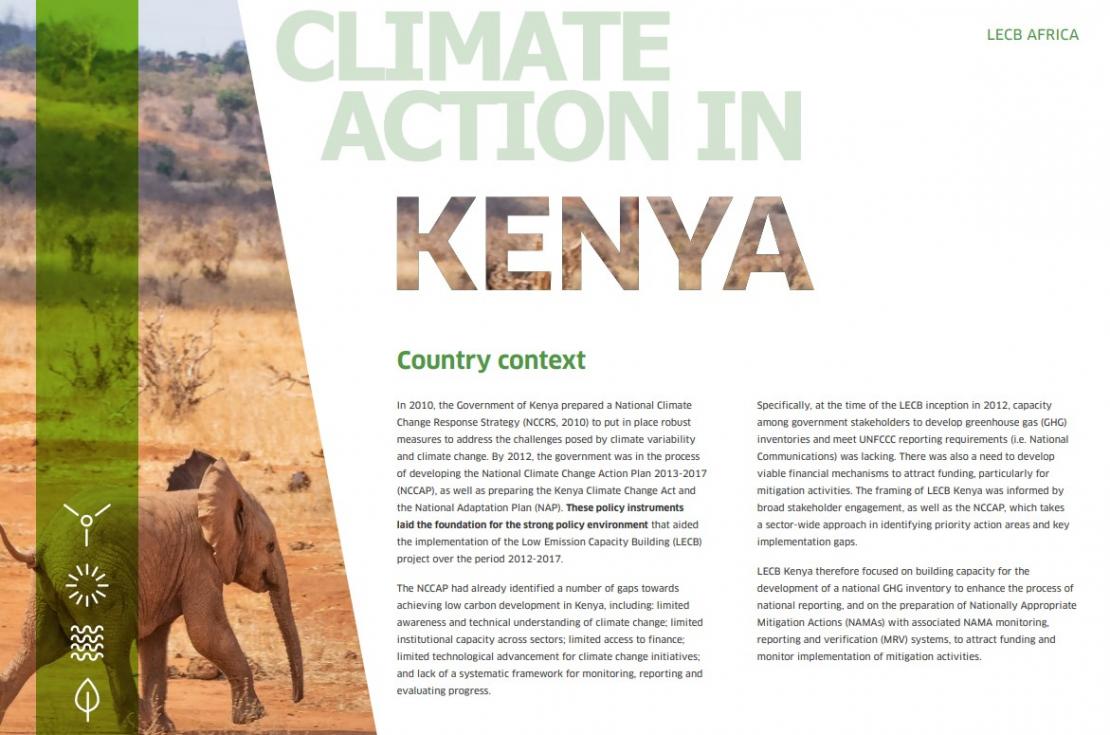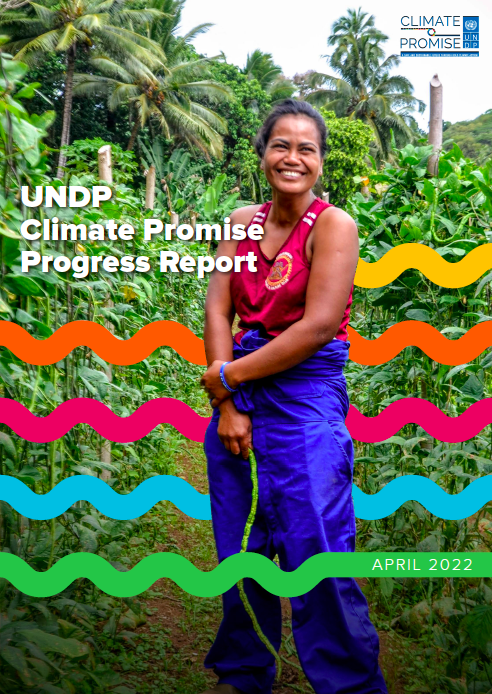LECB Programme Impact and Results: Kenya

In 2010, the Government of Kenya prepared a National Climate Change Response Strategy (NCCRS, 2010) to put in place robust measures to address the challenges posed by climate variability and climate change. By 2012, the government was in the process of developing the National Climate Change Action Plan 2013-2017 (NCCAP), as well as preparing the Kenya Climate Change Act and the National Adaptation Plan (NAP). These policy instruments laid the foundation for the strong policy environment that aided the implementation of the Low Emission Capacity Building (LECB) project over the period 2012-2017.
Specifically, at the time of the LECB inception in 2012, capacity among government stakeholders to develop greenhouse gas (GHG) inventories and meet UNFCCC reporting requirements (i.e. National Communications) was lacking. There was also a need to develop viable financial mechanisms to attract funding, particularly for mitigation activities. The framing of LECB Kenya was informed by broad stakeholder engagement, as well as the NCCAP, which takes a sector-wide approach in identifying priority action areas and key implementation gaps.
LECB Kenya therefore focused on building capacity for the development of a national GHG inventory to enhance the process of national reporting, and on the preparation of Nationally Appropriate Mitigation Actions (NAMAs) with associated NAMA monitoring, reporting and verification (MRV) systems, to attract funding and monitor implementation of mitigation activities.


